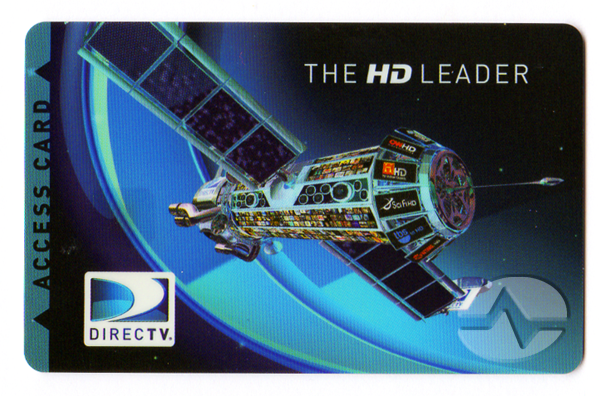It’s the access card in your receiver. Actually it’s the access card and the thing it connects to, they sort of work as a team.
Why do they call it that?
Conditional Access is a term that was popular about 20 years ago when the world was first getting a look at today’s satellite television. Before DIRECTV and DISH, all satellite TV was unencrypted, or required special hardware decryption on a channel by channel basis. This meant in most cases, all you had to do in order to get free TV is point a satellite dish.
See, satellite television was always thought of as a way to get content from place to place. It was thought that it would be used for transfers from a remote location to a network broadcast center, and so there was no need for security. Even more importantly, satellite equipment was very expensive and it was never expected that an average person would be able to afford it. Yet, by the 1980s it was possible to get a satellite dish for the equivalent of a few months’ rent of a decent apartment. As a result, people started doing it so they could get all the premium channels for free.
Obviously that wasn’t going to stand for long.
Direct Broadcast Satellite
The entire idea of satellite television as we know it now was based something called “Direct Broadcast Satellite.” That’s the idea that content providers could get paid for what they put over the air, and then charge a customer. Essentially the idea was to replicate the cable TV model, but with radio waves instead of wires. It took some time and some new laws to make it happen. With the blessing of Congress and the FCC, companies like DIRECTV and DISH started developing technologies for making that possible. In general, this technology was called “conditional access.”
How does a conditional access module work?
A conditional access module has two parts. There is a smart card which contains information that is unique to the receiver and the account, and a module which stores programming information for the account after it is downloaded from the satellite. The third part of the system is a satellite transponder that is literally sending long streams of account numbers, access cards, and programming information 24 hours a day. The satellite receiver accesses and stores that information. That way, the receiver knows which channels the customer can see as part of their programming package.
A CAM can be the size of a credit card, and that’s the most common format you’ll see on satellite TV hardware. It can also be smaller, like the size of a SIM card. That’s the size you’ll see on DIRECTV’s H26K receiver and Genie 2. Or, in the case of DISH hardware, the CAM is just a bit of flash memory inside the box, so you can’t see it at all.
People don’t use the term “CAM” much anymore unless you’re having a real problem with your receiver. If your access card goes bad you can have it replaced. Sometimes, on the rare occasion, the wrong card gets associated with a receiver. At that point you need a new card. That’s when you need an expert on your side.
Want to know more?
If you need help with your access card, we’re here for you! Do you want to upgrade your system, or just want to know what’s new in the world of satellite TV?Call the experts! We’re here for you during East Coast business hours! Just call us at 888-233-7563. You’ll reach a tech who can walk you through all the details. After hours? No problem! Fill out the form below. We’ll get right back to you!

